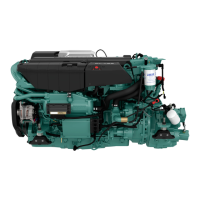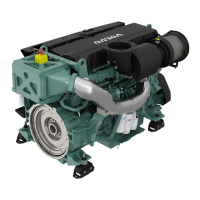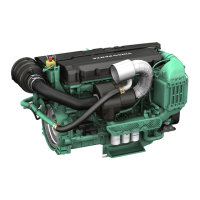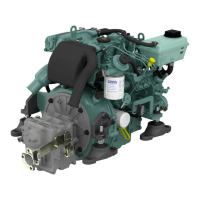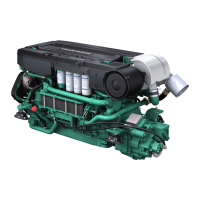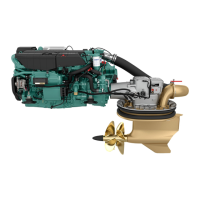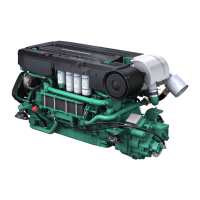66
Maintenance. Seawater system
Seawater system
The seawater system is the engine’s external cooling system. The seawater system sucks in water through the
seawater inlet and pumps it through the heat exchanger and the reverse gear oil cooler. The system is protected
from galvanic corrosion by means of zinc anodes located in the heat exchanger and the reverse gear oil cooler.
WARNING! There is a risk of water entry when you do any work on the seawater system (if the boat is in
the water). If any hose, plug etc. located below the waterline is removed, water will flow into the boat.
Always close the sea cocks. If the boat does not have sea cocks, the water flow must be blocked in a
safe manner. If this is not possible, the boat must be drawn up on land before work starts.
Seawater system. Draining.
The seawater system must be drained in cold weath-
er, if there is a risk of frost, to prevent frost damage.
WARNING! Risk of water entry. Close the sea-
water cocks before doing any work on the sea-
water system.
An alternative to draining is to keep the engine bay
above freezing temperature, by means of a fan heat-
er which is approved for outdoor use.
Draining:
1. Close the sea cock.
2. Connect a hose to each drain tap before opening
the tap (one at a time).
3. Open the drain taps/remove the drain plugs (S)
and allow the water to run out.
Drain points:
– tap on reverse gear oil cooler
– tap at rear of heat exchanger
– tap above seawater pump
– plug below seawater pump
IMPORTANT! Check that all water really
does drain out. Deposits may need to be
cleared away, inside the drain plug/tap.
4. Also drain/empty any auxiliary equipment such
as the seawater filter, flushing/bilge pump etc.
5. Install the lid on the flushing/bilge pump if fitted.
Connect all hoses.
6. Close/install all drain taps and plugs before you
leave the boat.
S
S S S
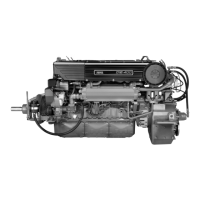
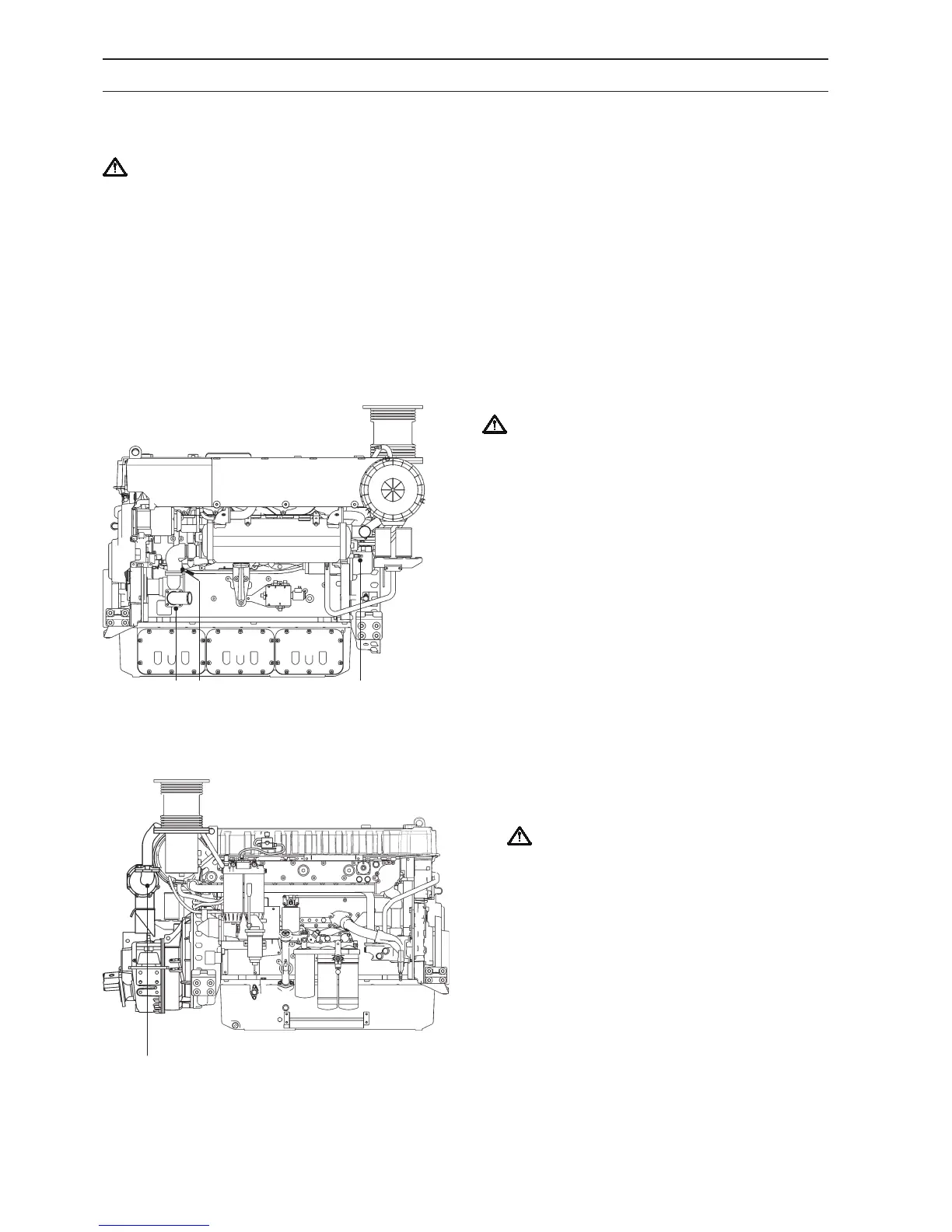